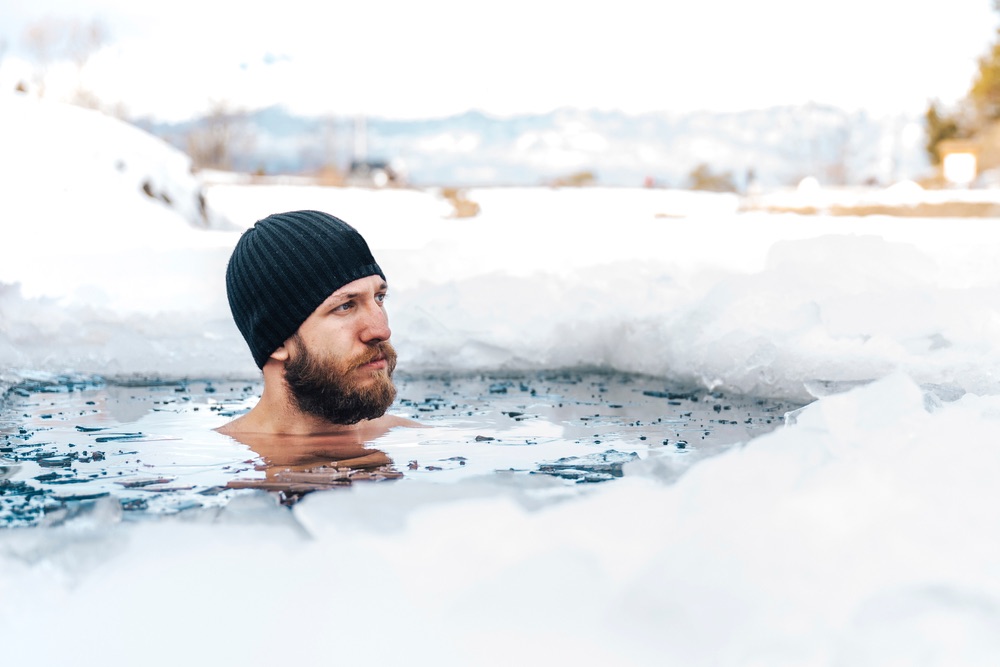The science and strategy behind ice bath therapy
Taking the plunge in an ice bath may make you look cool on Instagram, but is there far more than meets the eye in immersing yourself in freezing water to unlock previously untapped reserves of resilience? And does the evidence for it boosting physical and mental recovery really stand up, asks New Body Plan’s Joe Warner
In the relentless pursuit of red-hot performance, we often overlook a paradoxical ally: ice-cold recovery. Ice bath therapy, a chilling whole-body immersion in water barely above freezing, is much more than a hard-man method to soothe spent muscles. It’s a frosty key that unlocks increased endurance, reduced inflammation, and an edge in mental resilience. So, lace up your resolve, breathe deep, and brace for the cold; it’s time to explore the invigorating depths of this icy endeavour. Ready to take the plunge?
Find your perfect fat-loss plan!
Take the New Body quiz!
What exactly is ice bath therapy?
Ice bath therapy, also called cold water immersion or cryotherapy, is a practice involving the submersion of the body in water chilled to a bracing 10-15 degrees Celsius. Known for combating post-exercise muscle soreness and inflammation, it also serves as a gateway to mental resilience. As suggested in the British Journal of Sports Medicine: “Cryotherapy can reduce muscle pain and inflammation post high-intensity exercise.” The ice bath presents a challenge for body and mind, making the seemingly insurmountable a new norm.
How does an ice bath aid recovery?
They help recovery by leveraging the body’s physiological responses to extreme cold. The sudden temperature drop causes blood vessels to constrict, reducing inflammation and pushing out metabolic waste from muscles. Then, as the body re-adjusts to normal temperature post-bath, blood vessels dilate, paving the way for oxygen-rich blood to flood back into the muscles. A 2017 study in the Journal of Physiology affirmed that “cold-water immersion improves recovery more than rest alone,” suggesting a unique edge offered by the frosty dip.
Is cold water immersion beneficial for mental health?
Beyond the physical, an ice bath might serve as a unique mental strengthening tool. The initial shock of the cold, while uncomfortable, can ultimately foster mental resilience and better stress management. A study published in Medical Hypotheses proposed that: “repetitive, short-term cold stress exposure can enhance mood and improve the quality of life.” The ice bath, then, isn’t just a recovery method: it’s a mental battleground.
Who can benefit from ice baths?
Though the spotlight often shines on high-performance athletes, the benefits of ice bath therapy span across the fitness spectrum. Casual exercisers might experience enhanced recovery, and those seeking a mental challenge can test their mettle in the frosty waters. Health and wellness seekers at every level can find something to gain from this chilling experience.
Can cold water immersion replace my current recovery routine?
Ice baths are a valuable tool, but they’re not the whole toolbox. They are best utilised in tandem with other recovery modalities like sufficient sleep, adequate nutrition, and mindfulness practices. The International Journal of Sports Medicine emphasised that: “a combination of multiple recovery strategies appears to be most effective.” Balance, as always, remains paramount.
Are there any risks or downsides to an ice bath?
As with any therapy, there are potential risks to consider. The cold exposure can cause discomfort and potential skin reactions. Those with specific medical conditions, like heart issues, should consult their healthcare provider before braving the chill. Ice baths are a daring leap into the cold, and such leaps should be taken with safety in mind.
How do I get started with ice baths?
Starting with ice bath therapy is a test of gradual acclimation. Begin with shorter durations – 5-10 minutes – and progressively lengthen your immersion as you become comfortable. Keep the water temperature between 10-15 degrees Celsius; chilled, but not perilously freezing. Ice baths aren’t a plunge into the Arctic, but a manageable, methodical dip into the cold.
How to get used to cold water immersion ice baths
- Start slow: Ease into ice bath therapy with brief, initial exposures, gradually increasing duration as you adapt.
- Consistency is key: Regular, consistent exposure to cold is more advantageous than infrequent, extreme sessions.
- Combine and conquer: Use ice bath therapy in conjunction with other recovery strategies for a comprehensive recovery approach.
- Master your mindset: Use the mental hurdle of ice baths as a resilience training opportunity.
- Safety first: Always prioritise safety, consult a healthcare professional if in doubt, and never replace medical advice with ice bath therapy.
Find your perfect fat-loss plan!
Take the New Body quiz!
Train for your body type for your ultimate body transformation
The free arm workout for big and impressive biceps and triceps

